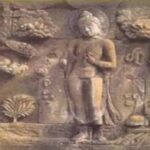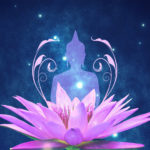Recent Comments
- Chodpa on The Place where the Primordial Speaks
- Chodpa on The Cuckoo of Presence
- Afzar on Bodhidharma’s teacher, Prajnatara
- Vajragoni on Audiobook is released
- Scott on Audiobook is released
-
Recent Posts
Categories
- A Darkness Visible
- A Docetic Assessment
- A Mystical Odyssey through the Sagathakam
- AI Creations
- Akṣayamatinirdeśasūtra
- Akṣhobhya’s Pure Land
- Ālaya-vijñāna
- Anūnatvāpūrṇatvanirdeśaparivarta
- Ariyapariyesanā Sutta
- Ascending the Noble Mountain of Primordial Perfection
- Asceticism
- Ashtavakra Gita in Light of the Unborn
- Audiobook
- Bankei Zen
- Beyond the Ascent
- Beyond the Rainbow Body
- Black Dragon Eye Mandala
- Bodhicitta
- Buddhadharma
- Buddhism’s Black Holes
- Buddhist Anecdotes
- Buddhist Hells
- Buddhist Meditations on the Tarot
- Chuang-Tzu
- Contemporary Musings
- Ḍākiṇī
- Dāsbodh
- Dharmakaya Abbey
- Dharmakaya Stick
- Divine Revelation
- Doctrine of the Void
- Dust Contemplation
- Ekacitta: Advanced Studies in Dark Zen
- Entry into the Dharmadhātu
- Eremitical Dhyani Meditations
- Exploring the Book of Revelation
- Gnostikos
- Hsin Hsin Ming
- Journey to the Center of the Mind
- Karma and Rebirth
- Korean Sŏn
- Kulayarāja Tantra—The Motherly Buddha
- Little Office of Our Lady of the Void
- LSD and Psychedelic Buddhism
- Māṇḍukya Kārikā
- Mañjuśrī Teaches Prajñāpāramitā
- Māra and Satan
- Meister Eckhart
- Mud and Water: Bassui Zen
- Mystagogia
- Nirvana
- Notes from the Iron Stupa
- Nothingness in Nāgārjuna and John of the Cross
- Obscure Religious Cults
- Preparation for the Afterlife
- Primordial Qigong
- Reflections on the Saṃdhinirmocana Sūtra
- Spirituality
- Springtime with Tozen
- Terma: A Mind Film by Vajragoni
- The Afterglow
- The Awakening of Faith
- The Bhagavad Gita
- The Book of Bodhi
- The Cloud of Unknowing in Light of the Unborn
- The Diamond Sutra
- The Divine Ātman
- The Divine Liturgy of Vajrasattva
- The Doctrine of Awakening
- The Dragon Mind of Zen Tarot
- The Elucidation of Consciousness
- The Experience of No-Self
- The Great Perfection of the Unborn Mind: A Book of Privy Counseling
- The Heart Sutra
- The Hermit's Den
- The Khaggavisāṇa Sutta: A Rhinoceros Horn
- The Lankavatara Sutra
- The Lankavatarian Book of the Dead
- The Lion's Roar of Queen Śrīmālā
- The Lotus Sutra
- The Mahāparinirvāṇasūtra
- The Naga Chronicles
- The Platform Sutra
- The Ratnagotravibhāgaśāstra
- The School of the Spirit
- The Secret Golden Light of the Unborn
- The Soul
- The Śūrańgama Sūtra
- The Sutra of Primordial Enlightenment
- The Tathāgatagarbhatārā Tantra
- The Udāna
- The Unborn Mind Mythos
- The Unborn Mind Sessions
- The Unborn Odyssey: A Novel
- The Vajrasamādhi Sutra
- The Vimalakirti Sutra
- The Yogasūtras of Patañjali
- The Zen Teaching of Bodhidharma
- The Zen Teaching of Instantaneous Awakening
- The Zen Teachings of Huang Po
- Theologia Mystica
- Tozen Teaching
- Tsung-mi: An Intimate Study
- Unborn I Ching
- Unborn Light Reiki
- Uncategorized
- Vasubandhu and the Absolute
- Wisdom from the Masters
- Wordsworth and Zen
- Yoga of the Manomayakāya
- Zen
- Zuowang
Archives
- October 2024
- August 2024
- February 2024
- January 2024
- December 2023
- November 2023
- October 2023
- September 2023
- August 2023
- July 2023
- June 2023
- May 2023
- April 2023
- March 2023
- February 2023
- January 2023
- December 2022
- November 2022
- October 2022
- September 2022
- August 2022
- May 2022
- April 2022
- March 2022
- February 2022
- January 2022
- December 2021
- November 2021
- October 2021
- September 2021
- August 2021
- May 2021
- April 2021
- March 2021
- February 2021
- January 2021
- December 2020
- November 2020
- October 2020
- September 2020
- August 2020
- May 2020
- April 2020
- March 2020
- February 2020
- January 2020
- December 2019
- November 2019
- October 2019
- September 2019
- August 2019
- June 2019
- February 2019
- January 2019
- December 2018
- October 2018
- August 2018
- April 2018
- March 2018
- February 2018
- January 2018
- December 2017
- November 2017
- October 2017
- September 2017
- August 2017
- May 2017
- April 2017
- March 2017
- February 2017
- January 2017
- December 2016
- November 2016
- October 2016
- September 2016
- August 2016
- July 2016
- May 2016
- April 2016
- March 2016
- February 2016
- January 2016
- December 2015
- November 2015
- October 2015
- September 2015
- August 2015
- July 2015
- June 2015
- May 2015
- April 2015
- March 2015
- February 2015
- January 2015
- December 2014
- November 2014
- October 2014
- September 2014
- August 2014
- May 2014
- April 2014
- March 2014
- February 2014
- January 2014
- December 2013
- November 2013
- October 2013
- September 2013
- August 2013
- May 2013
- April 2013
- March 2013
- February 2013
- January 2013
- December 2012
- November 2012
- October 2012
- September 2012
- August 2012
- May 2012
- April 2012
- March 2012
- February 2012
- January 2012
- December 2011
- November 2011
- October 2011
Meta
Tag Archives: imagelessness
The Creator

An earnest, true Lankavatarian adept of the Unborn Mind-school should recognize and be fully convinced that this triple world is nothing but a complex manifestation of one`s mental activities; that it is devoid of selfness and its belongings. That there are no strivings, no comings and no goings. In light of the Lanka, One should recognize and accept the fact that this triple world is manifested and imagined as real only under the influence of habit-energy that has been accumulated since the beginning-less past, by reason of memory, false-imagination, false-reasoning as well as attachments to the multiplicities of objects and reactions in close relationship and in conformity to ideas of body-property-and-its-master, the imaginary mind.
Posted in Springtime with Tozen
Tagged Creator, God, guilt, imagelessness, mind-disease, personality, Right View
Leave a comment
The Lanka and the no-soul

In order to have the best overall comprehension of Unborn Mind Zen’s notion of a soul, one first needs to turn to the best foundational source, the Lankavatara Sutra. As we do so keep in mind this question: Does a Buddha have a soul?
Posted in The Soul, Zen
Tagged imagelessness, Lankavatara Sutra, pudgala, soulness, two-fold egolessness
Leave a comment
Eternal Birth

It is within Eckhart’s exact art of preaching and the “ascesis of attentive listening” that the transcendent awareness of the Divine Birth takes place, and the mystical ground is self-realized; incidentally this is the same act as proclaiming and receiving the Buddhadharma. Eckhart planned particular sermons for the meaning of Christ’s birth. This was initiated to coincide with the cycle of the liturgical season of Christmas. Sermon 101 starts by citing Wisdom 18:14- 15, the “Introit, or opening chant, for the mass of the Sunday within the octave of Christmas.”
Posted in Meister Eckhart
Tagged birthing, imagelessness, Tathāgatagarbha, The Word, Tozen
Leave a comment
Spiritual Madness

DISCOURSE NINE
How confused adepts misunderstand the word “in”,
And the delusions which follow
Why Birth, Why Death?

Having now covered a healthy dose of this series on the Sagathakam, you may have observed that many of these gathas (verses) are repetitious in nature. It’s as if the Sagathakam is one long spiritual exercise for students of the Lanka and that elements of its composition was not composed by just one scribe, but several. Since the Sagathakam basically covers the most prominent themes found within the Lanka, these different scribes composed many variations based on the same themes. In this fashion, the diligent and astute adept would be sure to memorize what was essential to the integrity of the Lanka as a whole.
Posted in A Mystical Odyssey through the Sagathakam
Tagged Birth, Death, deathlessness, imagelessness, Parinishpanna
1 Comment
The Astounding Eighth Stage

- Mind (citta*) is the Alayavijnana, Manas is that which has reflection as its characteristic nature, it apprehends the various sense-fields, for which reason it is called a Vijnana.
Citta: citta principally means Mind. However, Suzuki breaks this down even more specifically and it is warranted that we note this:
Posted in A Mystical Odyssey through the Sagathakam
Tagged Akanishṭha, bhumi, citta, eighth stage, imagelessness, Maheśvara
Leave a comment
Non-Abidance

3. Q: Where does the Unborn Mind dwell?
A: Dwelling in imageless non-abiding is Its True Abode.
Q: What is this imageless non-abiding?
A: Imagelessness means abiding in no-thing, whether good or evil, being or non-being, neither within nor without, nor somewhere in-between. This is the meaning of being beyond the void of voidness, since there is really nothing to settle-in nor avoid. In this fashion one IS within the motionless-Unborn Mind that dwells neither here nor there, but everywhere for those who behold IT with imageless-eyes.
Q: So, then, what is this imageless-mind really like?
A: IT has neither form nor formlessness, no substrata of sense or thought, volition or mortal consciousness. IT is colorless, such as being devoid of yellow or green, blue or white. Unborn and deathless, IT is perfect quiescent stillness. Such then, is the Imageless Mind—the unadulterated Buddhakaya.
The Fundamental Principle
16. “On the first day of the ninth moon, the Master said to me: From the time when the Great Master Bodhidharma arrived in China, he spoke only of the One Mind and transmitted only the one Dharma. He used the Buddha to transmit the Buddha, never speaking of any other Buddha. He used the Dharma to transmit the Dharma, never speaking of any other Dharma. That Dharma was the wordless Dharma, and that Buddha was the intangible Buddha, since they were in fact that Pure Mind which is the source of all things. This is the only truth; all else is false. Prajna is wisdom; wisdom is the formless original Mind-Source. Ordinary people do not seek the Way, but merely indulge their six senses which lead them back into the six realms of existence. A student of the Way, by allowing himself a single samsaric thought, falls among devils. If he permits himself a single thought leading to differential perception, he falls into heresy. To hold that there is something born and to try to eliminate it, that is to fall among the Sravakas.1 To hold that things are not born but capable of destruction is to fall among the Pratyekas.2 Nothing is born, nothing is destroyed. Away with your dualism, your likes and dislikes. Every single thing is just the One Mind. When you have perceived this, you will have mounted the Chariot of the Buddhas.”
Posted in The Zen Teachings of Huang Po, Zen
Tagged Fundamental Principle, imagelessness, no-thing attainable
Leave a comment

